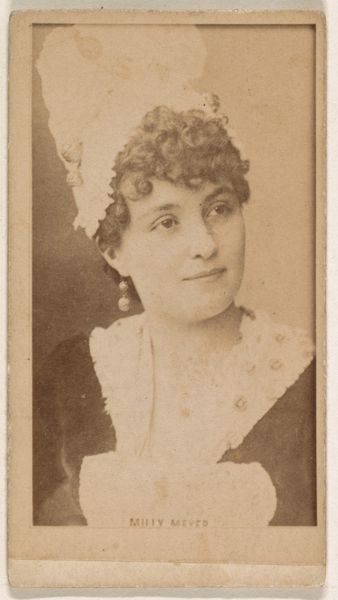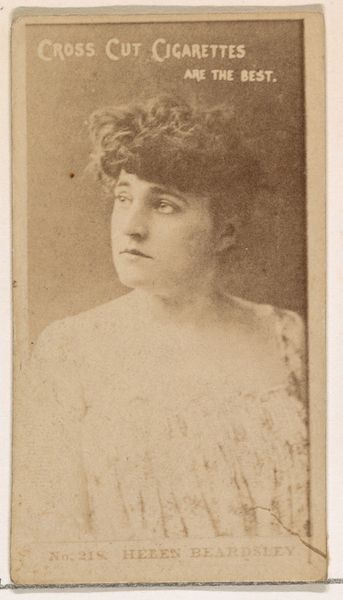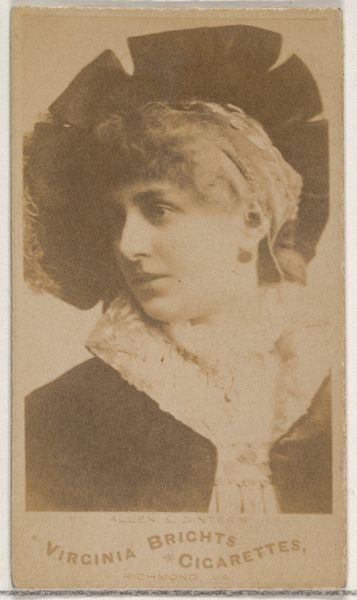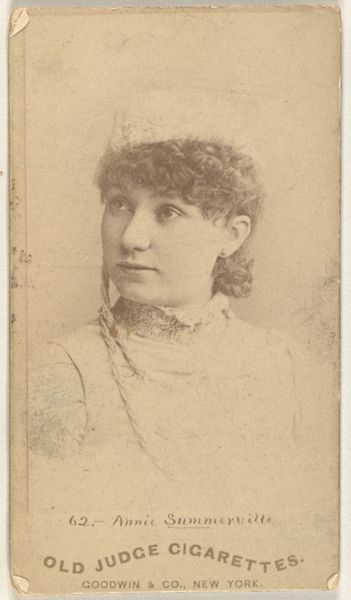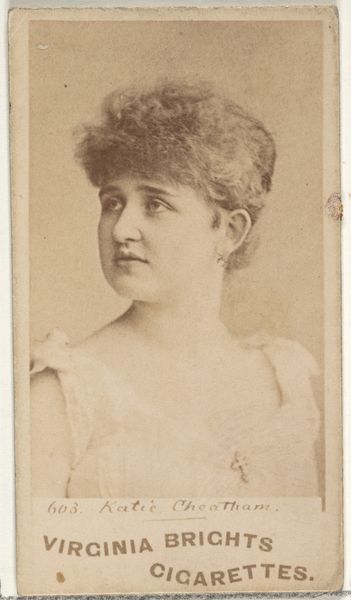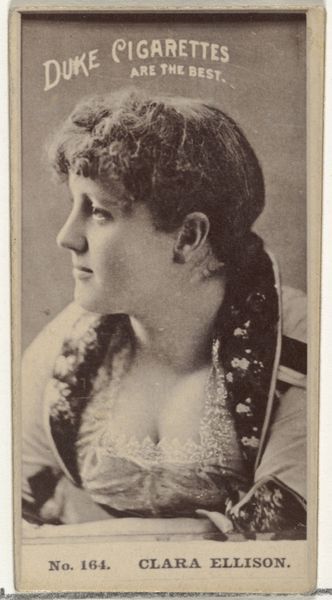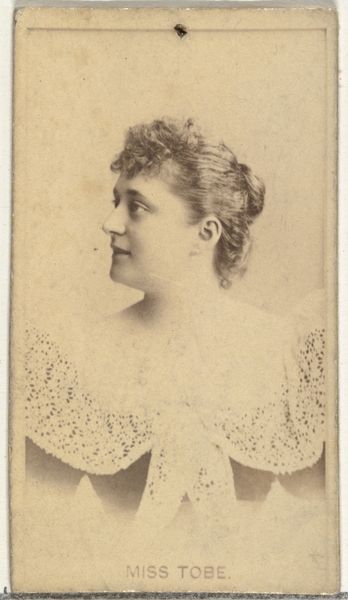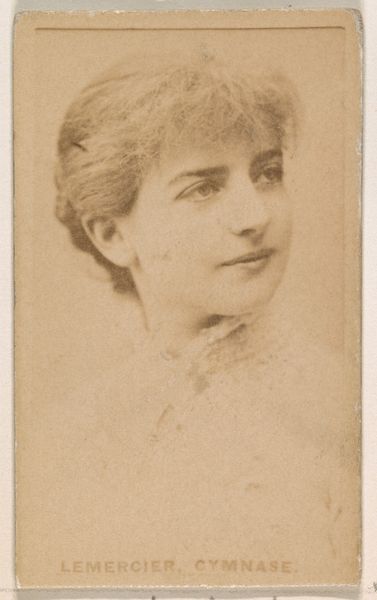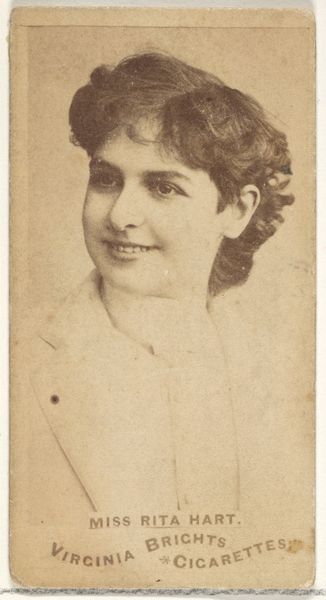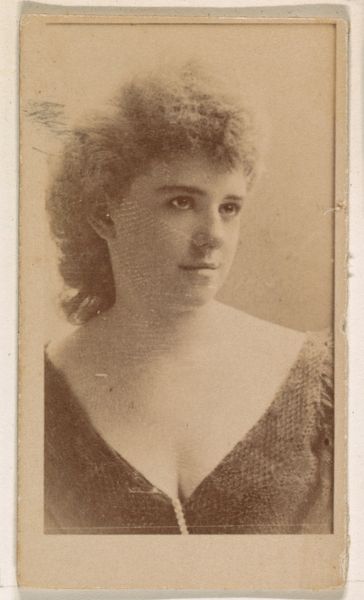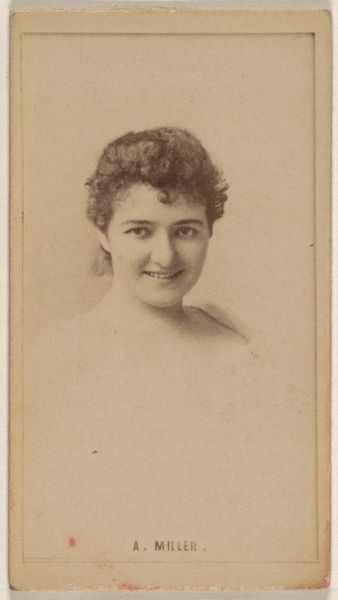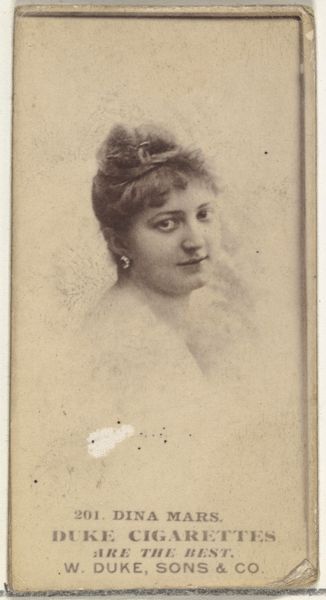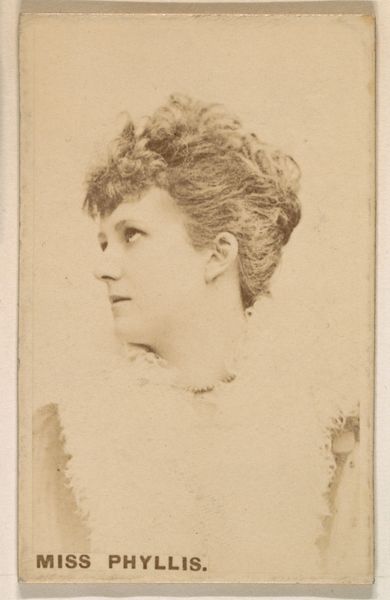
Dinelli, Palais Royal, from the Actors and Actresses series (N45, Type 1) for Virginia Brights Cigarettes 1885 - 1891
0:00
0:00
drawing, print, c-print, photography
#
portrait
#
drawing
#
pictorialism
# print
#
c-print
#
photography
Dimensions: Sheet: 2 3/4 x 1 3/8 in. (7 x 3.5 cm)
Copyright: Public Domain
Curator: Looking at this portrait, "Dinelli, Palais Royal," I’m struck by its soft focus and muted tones. It possesses an ethereal quality. Editor: It's surprisingly sentimental, considering its origin. This piece, dating from 1885 to 1891, is one from the "Actors and Actresses" series, specifically the N45 type, used as an insert for Virginia Brights Cigarettes. What does its softness suggest when considering its production and target consumer? Curator: Well, the portrait's gentle curves and delicate lighting choices enhance a certain ideal of femininity, a popular aspiration sold alongside cigarettes, perhaps? It really pulls on the viewer, regardless of how it was distributed. Editor: Absolutely. Its creation relies on both photographic and print technologies. Examining it this way forces us to consider the mass production and the popular consumption of images of femininity in the late 19th century, how cultural ideals get embedded in material objects, accessible through commodification. It presents a specific vision, marketable enough to drive cigarette sales. Curator: Right, the formal choices support that agenda. Notice the subtle blurring; the artist uses this strategically. By obscuring precise detail, he enhances the actress's aura, creating a glamorous, but perhaps also unreachable ideal. That sense of being 'out of reach' would likely attract consumers. Editor: Exactly, and we see this piece today in the Metropolitan Museum of Art. Its status has shifted: elevated from cigarette packaging insert to an exhibited piece. This transition exposes the blurred lines between 'high art' and mass culture artifacts, suggesting how easily they can cross over depending on social and market value shifts. Curator: So, more than a simple portrait, we are dealing with the aesthetics of aspiration, captured in sepia tones! Editor: Indeed, considering the piece on several layers: material, production, marketing, as well as artistic choice deepens the story well beyond the photograph itself. It suggests broader themes about how taste, desire, and commerce worked at the time.
Comments
No comments
Be the first to comment and join the conversation on the ultimate creative platform.
